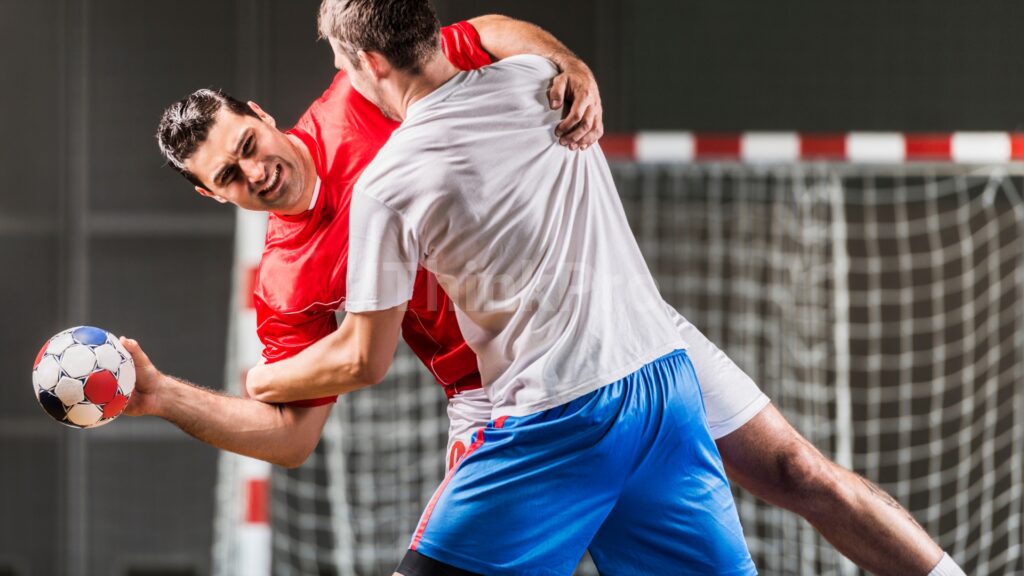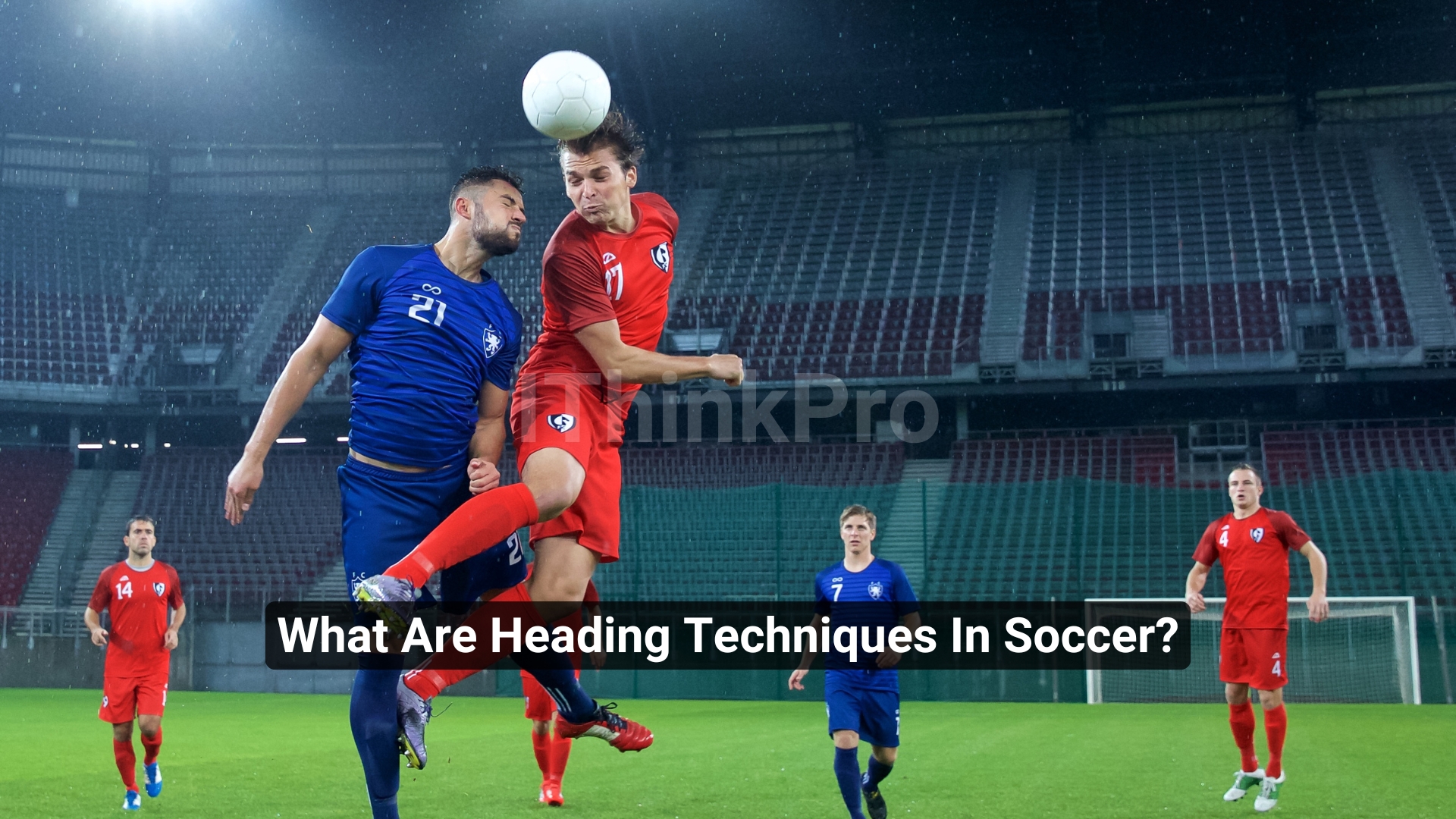Introduction
Hello Champ!
Soccer The rules of handball can be difficult to understand, leading to confusion for players, coaches, and fans. Whether it’s understanding intentional handball offenses or distinguishing between accidental and intentional contact, it’s easy to misinterpret these regulations.
Learning how to understand soccer handball rules can make the game easier. By familiarizing yourself with key factors such as weapon positioning and the referee’s decision-making process, you can quickly understand what constitutes a handball violation.
In this article, we’ll break down the nuances of handball rules, so you can confidently interpret decisions made on the field. Stay with us to get a better understanding of soccer handball rules and improve your soccer knowledge!
What Is the Soccer Handball Rule?
Defining Handball in Soccer
Handball in soccer refers to a situation where a player deliberately touches the ball with their hand or arm. According to Law 12 of the game, players other than goalkeepers are prohibited from handling the ball, especially if it’s done intentionally. For a handball offense to be called, the player must either deliberately move their hand toward the ball or make their body unnaturally bigger using their arm, affecting the outcome of the play.
The Purpose Behind the Handball Rule
The main objective of the handball rule is to ensure fair play. Soccer is a game where players rely on their feet to maneuver the ball, and allowing the use of hands could give an unfair advantage. The rule keeps the game competitive by making sure that players cannot use their arms or hands to interfere with the movement of the ball.
Key Differences Between Deliberate and Accidental Handball
A deliberate handball is when a player intentionally moves their hand or arm towards the ball to stop it or alter its direction. An accidental handball, on the other hand, occurs when the ball unintentionally makes contact with the player’s hand or arm. For example, if the ball is kicked at close range and hits the player’s hand without any movement toward the ball, this is generally considered accidental.
When Is Handball Called in Soccer?

Handball in Open Play vs. Set Pieces
Handball can be called during both open play and set pieces. In open play, a handball often occurs when a player tries to block or intercept a pass, shot, or cross. In set pieces, such as free kicks and corners, the defending team must be cautious, as raising their arms too high can lead to a handball call inside the box.
The Role of Arm and Hand Positioning
A critical factor in deciding handball is the position of the player’s arm or hand. If the arm is away from the body in an unnatural position, it is more likely to be considered deliberate. On the other hand, if the arm is close to the body and the contact is incidental, it is often ruled accidental. Arm positioning plays a significant role in referee decisions, with particular attention paid to whether the arm makes the player’s silhouette unnaturally larger.
Handball Inside vs. Outside the Penalty Area
When a handball occurs outside the penalty area, it usually results in a free kick for the opposing team. However, if it happens inside the penalty area, the consequences are more severe, leading to a penalty kick. The location of the offense is a key determinant in what type of play resumes.
Handball for Goalkeepers: What’s Allowed?
Goalkeepers have a different set of rules regarding handball. Inside the penalty area, the goalkeeper can handle the ball with their hands without incurring a penalty, as long as they do so within the bounds of normal play. Outside the penalty area, however, goalkeepers are treated like any other player and cannot touch the ball with their hands.
Consequences of a Handball Offense
Free Kicks Awarded for Handball
A common outcome for handball offenses outside the penalty box is a free kick. The opposing team is awarded a direct free kick from the spot where the handball occurred, which allows them to directly attempt a shot at goal or set up a tactical play.
Penalty Kicks for Handball Inside the Box
If a handball occurs inside the penalty area, the opposing team is awarded a penalty kick. This often leads to a high-pressure situation where the goalkeeper is the only defense against a shot taken from the penalty spot. Penalty kicks are game-changers and often have a major impact on the match outcome.
How Referees Decide Intentional vs. Unintentional Handball
Referees base their handball decisions on several factors, including the player’s intent, arm positioning, and proximity to the ball when the contact occurred. They must determine if the handball was deliberate or accidental, which often requires careful judgment and can influence the severity of the punishment.
Yellow and Red Cards for Handball Offenses
In some cases, players may receive a yellow card for a handball offense, especially if it’s deemed unsportsmanlike or a tactical move to stop an attacking play. If a deliberate handball prevents a clear goal-scoring opportunity, the player could even receive a red card, which results in immediate dismissal from the match.
How VAR Impacts Handball Decisions

The Role of VAR in Handball Reviews
VAR (Video Assistant Referee) plays a crucial role in reviewing potential handball decisions. VAR allows the referee to revisit an incident and decide whether a handball occurred, ensuring more accurate calls in crucial moments of the game. VAR reviews are particularly helpful in borderline cases where the initial call may not be clear.
How VAR Assists Referees in Determining Handball
VAR assists referees by providing multiple camera angles and slow-motion replays. This technology allows officials to carefully review whether the ball made deliberate contact with a player’s hand or if it was accidental. The process helps minimize human error and ensures fairer decisions.
Common Controversies Around VAR Handball Calls
Despite the benefits of VAR, its use in handball decisions has sparked controversy. Some fans and players argue that slow-motion replays can exaggerate what would have been considered accidental in real time. VAR decisions are sometimes debated, especially in situations where the handball rule’s interpretation can be subjective.
Common Misunderstandings About the Handball Rule
Is Every Contact with the Arm a Handball?
Not every instance of the ball touching a player’s arm is considered handball. The key factor is intent. Accidental contact, particularly when the arm is in a natural position, is not penalized.
The Proximity Rule: How Close Is Too Close?
The proximity rule considers how close the offending player was to the ball when it was struck. The handball is usually not called if the ball is played from a short distance and the player has no time to react.
Clarifying “Ball to Hand” vs. “Hand to Ball” Interpretations
One of the most common distinctions referees make is between ball-to-hand and hand-to-ball. If the ball moves toward the player’s hand without deliberate movement from the player, it is often ruled as ball-to-hand and considered accidental.
Tips for Players to Avoid Handball Offenses

Proper Arm Positioning While Defending
To avoid handball calls, players should keep their arms close to their bodies while defending. This minimizes the chances of the ball striking the arm and reduces the risk of being penalized for an accidental handball.
Awareness of Opponent’s Positioning During Play
Players must stay aware of the ball’s location and their opponent’s positioning to avoid getting caught in situations where the ball might hit their hand or arm. This helps reduce the likelihood of accidental contact.
Communicating with Referees on Handball Calls
Clear communication with referees is crucial in situations involving handball decisions. Players should respectfully express their perspective when handball calls are made, especially in instances where they believe the contact was accidental.
Practicing Defensive Techniques to Minimize Risk
Practicing defensive techniques, such as keeping arms tucked in during crucial moments of play, can help players avoid unintentional handball offenses. Drills focusing on ball handling and defensive positioning will help in reducing these risks.
Conclusion
In conclusion, understanding the rules of soccer handball is essential for both players and fans to appreciate the fairness and flow of the game. Key steps include learning the difference between intentional and accidental handball, the consequences of various handball offenses, and how factors such as arm positioning and VAR affect referee decisions. Additionally, tips for avoiding handball offenses, such as proper defensive technique and maintaining awareness during play, can help players minimize risks on the field.
Mastering the rules of handball not only helps in improving gameplay but also enhances your overall understanding of soccer. With the right knowledge, you can confidently analyze game situations and make informed decisions, whether you’re a player, coach, or fan.
Share this blog with others and feel free to explore our website for more useful information on soccer and other sports-related topics. Stay informed, stay engaged, and keep learning to elevate your soccer experience!
FAQs
Q1. What is considered handball in soccer?
A handball in soccer is when a player intentionally handles the ball with his hand or arm, leaving the goalkeeper in his penalty area. Accidental handballs may also be penalized depending on the circumstances and the referee’s decision.
Q2. Is accidental handball a foul?
An accidental handball is not always penalized unless it creates an immediate goal or goal-scoring opportunity. Referees consider factors such as intent, arm position and proximity to determine if it is foul.
Q3. Can goalkeepers commit handball offenses?
Yes, goalkeepers can commit a handball offense if they handle the ball outside their penalty area. Inside the box, they have more freedom, but outside it, they are treated like any other player.
Q4. What happens when a handball occurs in the penalty box?
If a handball offense occurs inside the penalty box, the opposing team is awarded a penalty kick. The severity of the offense may result in a yellow or red card.
Q5. Does VAR review handball decisions?
Yes, VAR can review handball decisions to assist the referee. It is used to clarify whether the handball was intentional or accidental and whether it affected a goal or scoring opportunity.











